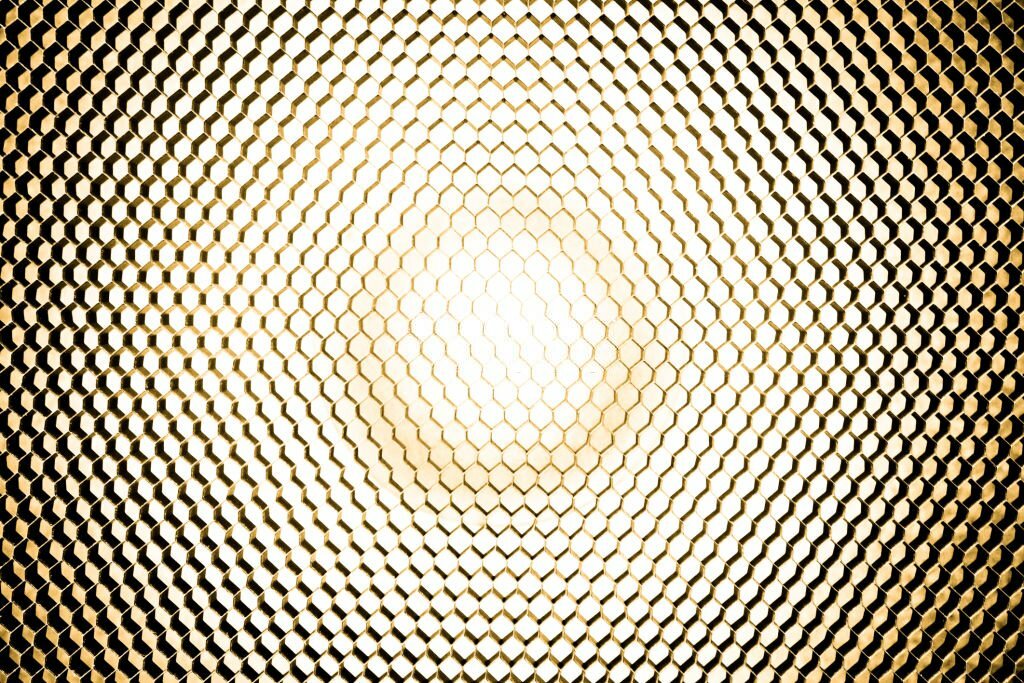Table of Contents
Unleash the Power of Honeycomb Grids: Transform Your Portraits!
Portrait photography is a captivating art that demands a keen eye for detail and creative use of lighting. Photographers often employ various tools and techniques to shape and control light in order to achieve the desired effect. One such tool that can significantly elevate the quality of your portraits is the honeycomb grid.
In this article, we will explore what honeycomb grids are, why they are valuable in portrait photography, and how to use them effectively to capture stunning portraits.
Understanding Honeycomb Grids
A honeycomb grid is a light modifier that attaches to the front of a strobe or speedlight flash unit. It consists of a grid of cells, resembling a honeycomb, with each cell serving as a tunnel to direct light in a specific direction. The grid typically restricts the light’s spread to a narrow beam, allowing you to control and focus the illumination precisely where you want it. Honeycomb grids are available in various cell sizes, typically measured in degrees, such as 10, 20, or 30 degrees, with smaller degrees providing a tighter, more focused beam of light.

Using Honeycomb Grids Effectively in Portrait Photography
- Select the Right Grid Size: The choice of grid size depends on the effect you want to achieve. Smaller grid sizes, like 10 degrees, create a more intense and focused light, while larger grid sizes, like 30 degrees, offer a broader but still controlled spread of light. Experiment with different grid sizes to find what works best for your subject and style.
- Positioning the Grid: Place the grid on your light source, ensuring it’s well-secured. The grid should be positioned close to the subject, while the light source is typically positioned at a 45-degree angle to the subject. This will help create sculpted highlights and well-defined shadows.
- Meter Your Light: Always use a light meter to ensure that your exposure settings are accurate. The grid’s focused light can affect the exposure, so metering is crucial to achieve the desired results.
- Experiment with Ratios: To create different moods and effects, experiment with the ratio of grid-modified light to ambient light or other sources of light in your setup. Balancing light ratios can help you achieve the desired level of drama or subtlety.
- Keep an Eye on Catchlights: While honeycomb grids are excellent for control, be mindful of catchlights in your subject’s eyes. Sometimes, these grids can create multiple small catchlights, which may or may not be the aesthetic you desire. Adjust the angle and distance of the grid to manage this effect.
- Practice and Refine: Like any photographic technique, mastering honeycomb grids takes practice. It’s essential to experiment, review your results, and refine your approach over time. Pay attention to the interplay of light and shadow and how it enhances the overall composition.

Advantages of Using Honeycomb Grids in Portrait Photography
- Controlled and Directional Lighting: One of the primary benefits of honeycomb grids is their ability to direct light precisely onto your subject. This controlled lighting is particularly useful in portrait photography, as it allows you to highlight specific features or areas of the face while minimizing spillage onto the background.
- Enhanced Depth and Three-Dimensionality: Honeycomb grids create a sense of depth and dimension in your portraits by producing a more dramatic and sculpted look. The light-to-shadow transition is more defined, which can be especially flattering in beauty and fashion portraits.
- Reduced Light Spillage: When shooting in a studio or controlled environment, you often want to minimize the impact of your lighting on the background. Honeycomb grids excel in this regard by keeping the light confined to the subject, resulting in cleaner, more professional-looking images.
- Soft Light Quality: While honeycomb grids do provide a concentrated beam of light, they can still produce a soft and flattering illumination when used in combination with softboxes, beauty dishes, or diffusers. This combination results in the perfect balance between directional lighting and softness.
What does a honeycomb do to a flash?
A honeycomb, when attached to a flash, serves as a light modifier that controls and shapes the direction of the flash’s output. The hexagonal cells of the honeycomb grid narrow the spread of light, creating a more focused and controlled beam. This directs the light precisely onto the subject while reducing light spillage onto the background or surroundings.
The result is more defined and dramatic lighting, making it a valuable tool for portrait photographers to create depth and dimension in their images.
What does a honeycomb flash grid do?
A honeycomb flash grid is a light modifier that attaches to a flash unit, typically used in portrait photography. The grid is made up of a grid of cells, shaped like a honeycomb, which restricts and directs the flash’s light into a specific beam. When a honeycomb flash grid is employed, it narrows the angle of the light, allowing for precise control over where the light falls.
This is especially beneficial for portrait photographers, as it helps in sculpting the subject’s features, creating well-defined shadows and highlights, and minimizing unwanted light spillage. In essence, a honeycomb flash grid enhances the quality of the light produced by the flash, resulting in more professional and striking portraits.
Conclusion
In conclusion, honeycomb grids are a versatile and powerful tool in the portrait photographer’s arsenal. They provide precise control over lighting, adding depth and dimension to your images. By selecting the right grid size, positioning it correctly, and experimenting with lighting ratios, you can take your portrait photography to the next level. With practice and a keen eye, you’ll be able to create stunning and captivating portraits that leave a lasting impression.


